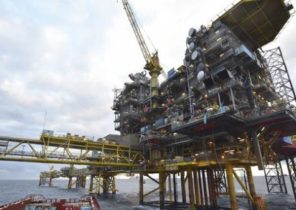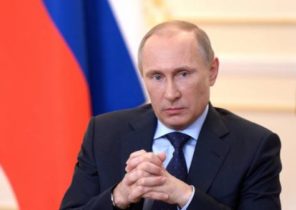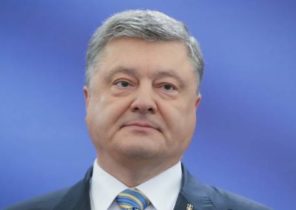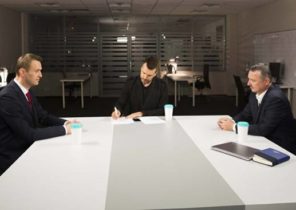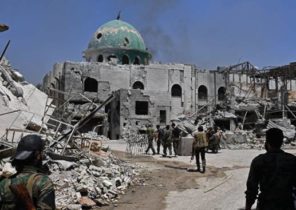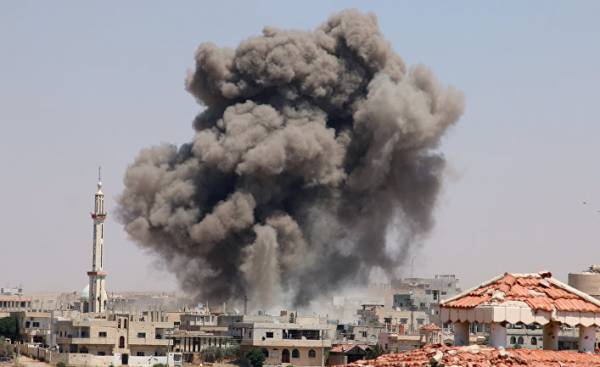
Damascus — the political press in the United States write about the division of Syria as a fait accompli. Moreover, they believe that this is the only way to stop the war. The patient decided to divide, ostensibly to separate the parts of his body are healed and happy independent life. In Iraq, such a program has already been implemented, and their effects are obvious. What part of it is supposed to divide Syria, and who will bear responsibility for it?
The idea of the necessity of the section of Middle Eastern countries in the United States appeared during the war in Iraq. In 2006, the famous American strategist Ralph Peters published a map on which the borders of all modern States of the middle East was redrawn. Iraq became the first victim of this approach. Apparently, with the referendum on the independence of the Kurdish territories, which will be held in September 2017, it will become section of the actual reality.
On the division of Syria spoke for the first time us Secretary of state John Kerry in February 2016. He said that the US has a “plan B”, which will come into force if recorded the failure of negotiations between the Syrian regime and the opposition in Geneva. The new US President Donald trump adopted a plan to partition Syria, proclaiming Kurdish separatists and their allies started to officially supply them weapons.
USA
Currently, the United States claim to control over two major parts of the country. USA are under political influence of the Kurdish political forces in Northern Syria, a significant part of the Syrian-Jordanian border and the border crossing at al-TANF on the border with Iraq. Active construction of military bases shows Washington’s plans for a long-term presence in the region, which is legitimized through the support of Kurdish separatism on the basis of the project of the Federation of Northern Syria on the model of neighbouring Iraqi Kurdistan. Disputed territory is the area of the dam al-Thawra, West of Raqqa, which the U.S. and its allies are on the South Bank of the Euphrates. The recent clashes between Kurds and Syrian army and the Americans shot down the Syrian su-22 show that the U.S. to leave is not collected.
After the capture of Raqqa forces of the democratic Syria will head South-East along the course of the Euphrates for the conquest of Deir AZ-Zor and reaching the Syrian-Iraqi border. However, it is unknown how much time they will need for the capture of Raqqa. While all forces are thrown on the capital of LIH (banned organization in Russia — approx. ed.), Deir al-Zor can be captured by the Syrian army or the Pro-Iranian volunteer units.
Turkey
Turkey after completing the operation “Shield of the Euphrates” controls a small area in the North of Syria, separating the Kurdish cantons. Overall, the operation achieved only a part of the set before it its goals — to eliminate the possibility of a connection controlled by the Kurdish territories in the East (Qamishli) and the West (Afrin). However, further expansion of the expansion was put into question due to the offensive South of the Syrian army. Under the command of Turkey to full combat readiness is currently a significant number of armed opposition groups numbering up to 3 thousand people.
As we reported from Washington, center for planning military operations in Jordan Amman sent a request to Ankara about sending these troops under the command of the United States to deter the onset of Pro-Iranian groups in the area of al-TANF, however, the Turkish leadership refused to the Americans. Currently, Turkey is in search of opportunities to expand their zone of influence at the expense of the Kurdish Canton of Afrin, in connection with attempting to establish cooperation with Damascus and Moscow.
Syrian journalists from Afrin write about the present panic in the Kurdish leadership. The Syrian military actually stopped the clearance of cargo coming in Afrin. Organized two months earlier communication between Managem and the Afrin stopped. According to information from Aleppo, June 28, Syrian authorities arrested 83 Kurdish political activist. Given the recent bellicose statements by Erdogan against the Syrian Kurds and the frequent from June 25 regular attacks of the Canton of Afrin, in the near future may start a large-scale operation by Turkish troops, backed by Pro-Turkish Syrian opposition in the direction of Afrin with the support of the Syrian government or even the active participation of the Syrian army.
For Turkey best control of Damascus over the Afrin, as this will ensure the relative reliability of protection of the border with Turkey and hamper the transit of weapons to militants of the PKK from Syria. In the case of the conquest of the territory of the district of Afrin Turkey may face a terror, and hold this territory will be very difficult. However, the capture Afrin will enable Turkey to significantly expand its zone of influence at the expense of neighboring Idlib province, which is entirely under the control of insurgents. The establishment of direct communication between Turkey and Idlib through the district of Afrin will greatly strengthen there positions of Ankara and to eliminate the influence of terrorist groups (Hayat Tahrir al-sham). Currently in Ankara ponder the choice between cooperation with Damascus under section Afrin or conducting large-scale military operation.
Iran
In Tehran did not try to abandon their plans to create a “Shiite geopolitical axis” which Syria must play a key role. For 2017, Iran has increased its volunteer units in Syria to 6 thousand people. This became possible in connection with a reduction in the intensity of the fighting in Iraq, the significance of the fight against ISIS and to develop policies that attract the groups of Shiites from Iraq, Pakistan and Afghanistan. The expansion of the military presence of Iran in Syria has enabled a number of large-scale operations against ISIS, which under Iranian influence was significant territory South of Palmyra (near phosphate deposits Nafis and al-Sharkia) and a small section of the border with Iraq (to the North of al-TANF).
Iran drew great benefits from diplomatic conflict between Doha and Riyadh, as was the only neighboring state that is able to quickly provide the population of Qatar food. In response to allegations of funding ISIS and other terrorist organizations in Qatar has sharply reduced assistance to allied groups, as well as Bedouin tribes active in the Syrian desert on the border with Iraq. This enabled Pro-Iranian forces to abandon stopped by U.S. air strikes attack on the al-TANF and continue it to the North-East in the direction of the station T2 and the border with Iraq town al-Bukamal.
Hezbollah in Beirut
Liberated from ISIS to the border of Syria and Iraq no convenient ways of communication. Trunk road is located to the South or in al-TANF (highway Baghdad — Damascus), or to the North in al-Bukamal (Deir al-Zor — Baghdad). The first is under the control of U.S. special forces and, as they say in Washington, will not be given to Pro-Iranian volunteers under any circumstances. The second well fortified and is under the control of ISIS, being the only safe route linking the Syrian and Iranian terrorist group. Thus, so far Iran has failed to perform its basic task of providing reliable land communication line Tehran — Beirut.
Russia
Russia lately has not taken in Syria of active hostilities. Bellicose statements command that all American planes South of the Euphrates would be considered objective, somewhat cooled the ardor of the pilots of the international coalition. However, no steps for the expulsion of the Americans from the area of the dam al-Thawra for the Euphrates was not done. It seems that Russian authorities are fully satisfied with their area of influence on the coast and in the area of Palmyra and would not attempt to expand it.
Syria
Until recently it seemed that the official Damascus completely refused to conduct an independent policy and handed their fate in the hands of the allies from Russia and Iran. However, skillfully maneuvering between their interests and playing on the contradictions, the Syrian government managed to defend the freedom of hands and much to strengthen the army. The truce in Astana has allowed Damascus to withdraw some troops from the front in the region of Hama and move them East to the area of Itria and Khanasir on the road connecting Aleppo with the South Syria.
During June, the Syrian army carried out a successful operation and closed the encirclement of the ISIS occupied large desert area to the South-East of Aleppo. Under the control of the Syrian government were the strategic pipeline, which before the war from the province of Haseki was the oil. Now the Syrian authorities will be able to negotiate with the Kurds on oil supplies, which is lacking in Damascus.
Theoretically, Syrian troops after the destruction of the encircled ISIS now unable to continue the offensive to the East in the direction of Deir AZ-Zor, forces, however, they will not do the job.
Partition of Syria into zones of influence does not mean the cessation of conflict. External actors still did not allow their differences on the Syrian issue, so will use controlled their troops to annoy the enemy. The greatest conflict would be expected in the East, where touches of American and Iranian spheres of influence. The US and Israel will not tolerate the establishment of land communication between Tehran and Beirut. In addition, in the provinces of Haseki and Deir AZ-Zor are large oil reserves. Washington will try to avoid the use of these fields by the Syrian authorities.
